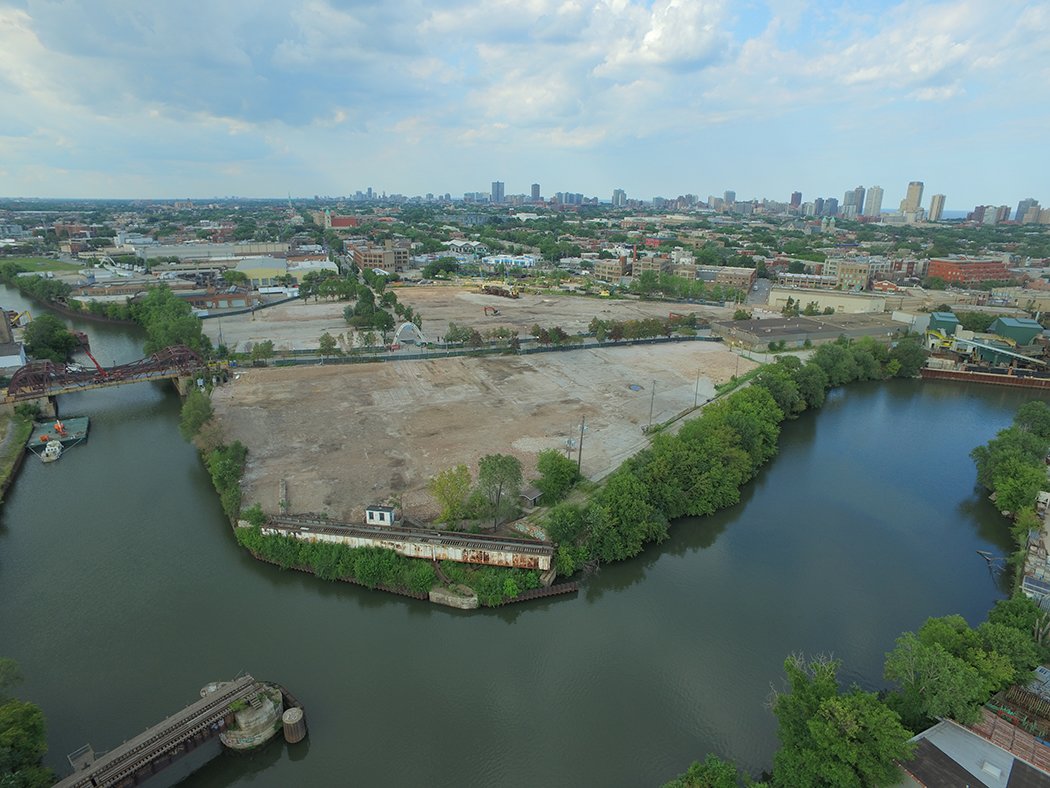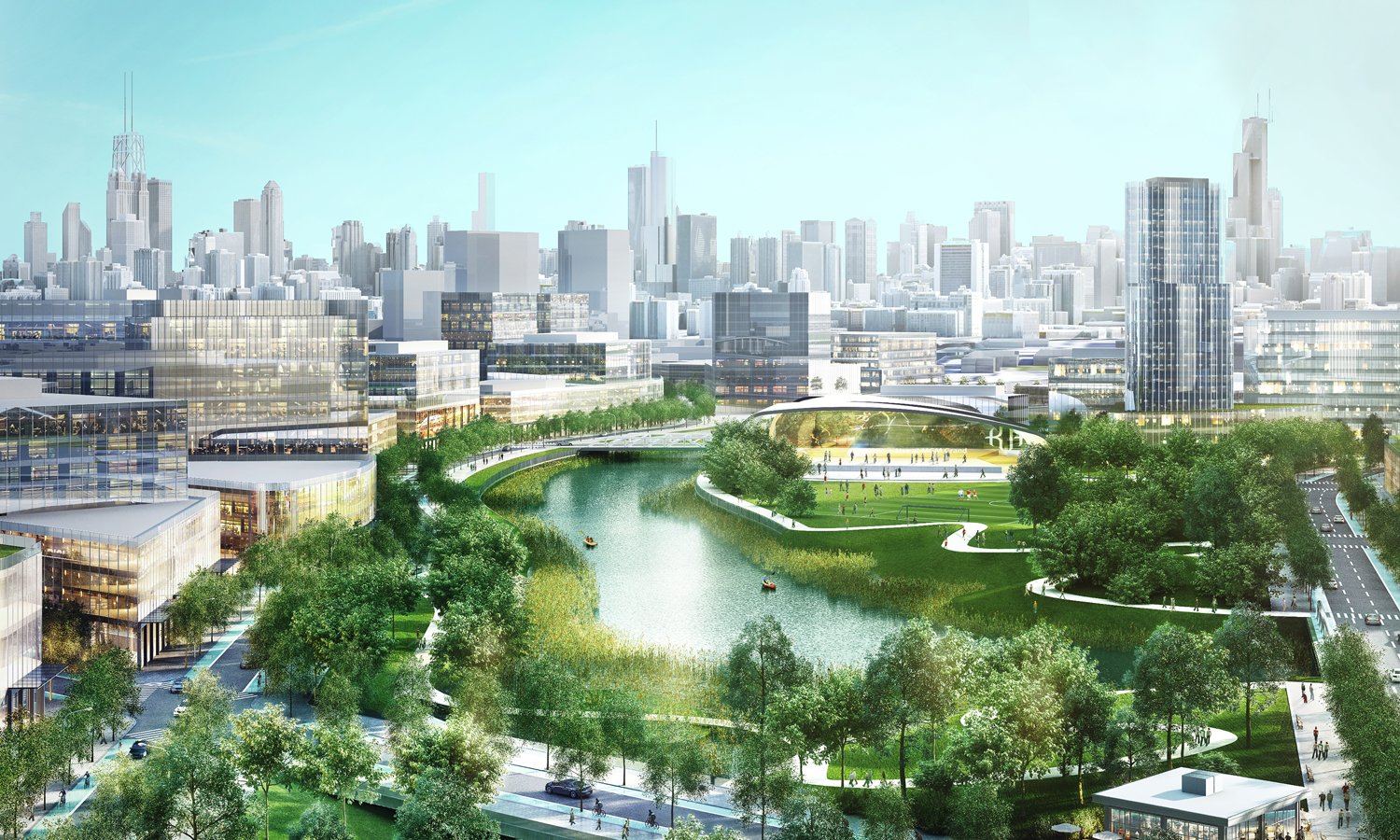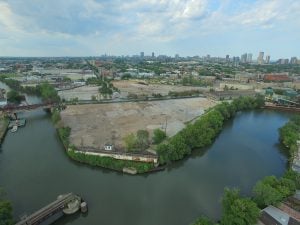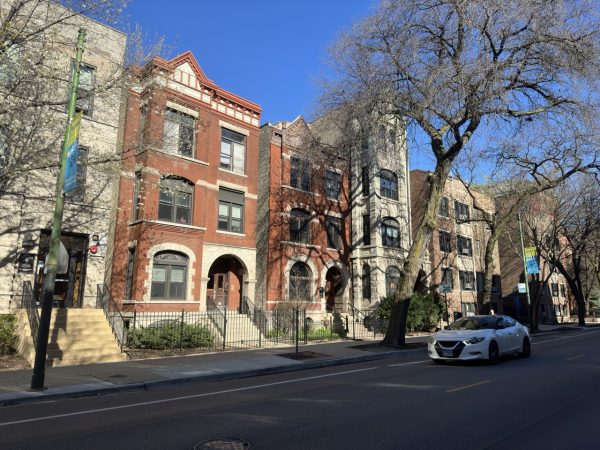Rahm’s legacy or taxpayer boondoggle?
Activists, aldermen question financing Lincoln Yards with funds for ‘blighted’ communities
City officials and investors are confident in the $5 billion Lincoln Yards development, a mere mile away from DePaul’s Lincoln Park campus, and its ambitious vision of a huge new commercial and residential hub in the neighborhood. But activists — and some aldermen — question the use of city financing meant for blighted neighborhoods and worry that the project is being pushed too quickly without plans for adequate affordable housing.
The development, which stretches the Clybourn-Cortland-Elston area along the Chicago River, will rely on Tax Incremental Financing (TIF), a form of taxation that promotes investment in infrastructure with the intent that funds accumulated from its amenities will go back into the community. In a designated TIF district, property taxes resulting from higher real estate values are kept in a separate fund for public improvements — dispersed at the discretion of the mayor — instead of being spent on schools and other city services. Lincoln Yards will be the largest and most expensive TIF project the city has ever seen, and the money raised will build infrastructure to benefit a private developer: Chicago real estate giant Sterling Bay.
Mayor Rahm Emanuel is energized by the prospect of implementing this large of an endeavor to make improvements along the river, something that has been a big part of his time as mayor, he says. “There’s a person willing to invest $5 billion, create 20-some-odd-thousand jobs. That doesn’t come around all the time. In a land that, if you don’t do it, will stay foul for a period of time,” Emanuel said.
As the site sits less than a mile away from the Lincoln Park campus, the DePaul community might be affected by the development. The process will begin by addressing infrastructure in the area, specifically the traffic-heavy intersections between Ashland and Racine. Students and faculty will find difficulty commuting to campus if they live near the site. Rent prices will also increase to satisfy the higher property taxes to compensate for the TIF money. Students are not the lone suffers of the increase in rent prices — mom-and-pop businesses could be affected by the multiple storefronts planned in the development.
For taxpayer money to come in, and eventually pay the investor back, the area needs the development of its own TIF district. According to a Chicago Department of Planning and Development document, the “Cortland/Chicago River TIF” as it has been named, would be a 168 acre-designation, housed within Chicago’s 2nd Ward.
By state law, the TIF money is supposed to be earmarked for “blighted” communities.
Recent projects that qualified include a new Whole Foods in Englewood and a Walmart in Pullman. But other projects, including the Marriott Hotel adjacent to DePaul’s new Wintrust Arena and the Navy Pier redevelopment, have drawn criticism from some activists who believe the money would be better spent in poorer neighborhoods. Likewise, the Lincoln Yards project would be built in one of the wealthiest areas in Chicago. Lincoln Park had the second highest average income per capita in 2014, according to data released by the City of Chicago.
Chicago Tribune architecture critic Blair Kamin has another concern: the project could siphon money from schools and other vital city departments.
“Because of the added increment, the added funds, that is generated won’t be going to public schools or other general taxing bodies, that puts a greater burden on homeowners in Chicago, in other words, that may cause a rise in property taxes,” Kamin said. “That’s the kind of trade-off here. Rahm Emanuel is promising economic development and jobs and all those things and those are all good. But there’s also a potential cost here, and that is what really needs to be debated, and it’s not the kind of debate we should be having in a quick snap.”
Other critics worry about a lack of affordable housing at the proposed development, including
46th Ward Ald. James Cappleman, the new chairman of the Chicago City Council’s zoning committee. Of the 6,000 housing units planned for Lincoln Yards, at least 300 affordable housing units will be on site. The 20 percent requirement for affordable housing will be met by building the remainder of the units off-site. According to Kamin, Cappleman has made it clear he wants more affordable housing within the TIF district before the plan gets final City Council approval.
According to the official TIF proposal, Lincoln Yards “qualifies under the applicable criteria” based on the 13 factors that are used to determine if a neighborhood is blighted. Lincoln Yards has the “meaningful presence and reasonable distribution” of five of these factors — obsolescence, deterioration, excessive land coverage, inadequate utilities and declining or lagging equalized assessed value.
Proponents of the project insist that it’s being brought to fruition in the proper manner. Peter Strazzabosco, the deputy commissioner for the Chicago Department of Planning and Development, said the detractors of Lincoln Yards are misinformed.
“Some people are suggesting without really understanding what’s going on,” said Strazzabosco. “The way that the infrastructure is going to be built is that the developer will pay for everything. The developer is going to fund hundreds of millions of dollars in public infrastructure out of their own pocket. Once this project is completed to satisfaction, they will be reimbursed through tax increments from the proposed tax increment finance district that’s being proposed for this site.”
The massive 54.5-acre site is set to involve 21 acres of open recreational space, four new bridges, an updated riverwalk, shop fronts and residential buildings, both affordable and luxury. The official website for Lincoln Yards states that it is committed “to improve a vast, underutilized parcel of land to benefit residents [and] businesses,” but it is currently unclear how the residents of the district will benefit because of the estimated cost to taxpayers at $1.3 billion, according to the Chicago Reader.
Developer Sterling Bay is proposed to fund upfront financing. The proposal stands at $490 million, and once it is completed, the developer will be reimbursed through the revenue that the TIF money is supposed to generate.
Sterling Bay’s involvement comes with an unrelated preoccupation, an outlier to the misuse of taxpayer funds. Two of the company’s top executives have donated to Mayor Emanuel’s campaigns. Key Principal Keating Crown contributed $1,000 to Chicago for Rahm Emanuel in 2013 and $5,300 in 2014 and their Chief Operating Officer, Brad Beile, gave $5,300 to the in 2013, according to the Illinois State Board of Elections.
Emanuel has committed the last part of his term as mayor to push the project to final approval before he steps down in May. He sees the enterprise as an investment for the public, not just another tactic to line the pockets of corporations.
“All the dollars you would talk about on TIF would go towards transportation, infrastructure and improvements in the parks and other areas that get general benefit that don’t go to the developer, they go to the overall area,” Emanuel said in a talk with DePaul’s Center for Journalistic Integrity and Excellence. “So you make an evaluation, you weigh your equities, and I think that’s the right thing to do.”
When asked why there is such a push for the Lincoln Yards project to be done right now, Strazzabosco made it clear that this project has been in the works for a long time.
“The redevelopment has been anticipated for five years,” said Strazzabosco. “The city initiated a process to guide future development on this three years ago. Since that time, there’s been 60 meetings, 60 public meetings, about the future of this area.”
The official Cortland and Chicago River TIF planning document lists 10 objectives with the most prominent ones relating to improvements in transportation and infrastructure, the expansion of businesses and job creation. The final objective states that the development will “provide opportunities for women-owned, minority-owned and local businesses and local residents in the redevelopment of the Project Area.”
Some see TIF money going towards an already wealthy area to be an egregious misuse of the public funds. Leslie Fox, a 43rd Ward aldermanic candidate, voiced her opposition via email. “The original goals of TIF were admirable. Using smart investment through private-public partnership as a way to increase development in undervalued communities has real value. However, that is not how the City Council has implemented the policy,” Fox said. “It has become an incentive for development in already prosperous areas of the city that also serves as a hand- out for corporate donors.”
When asked about the community’s view on the development, Fox had some questions for the people heading the development.
“The development went through with little-to-no community oversight,” Fox said. “The original package allotted for the development was $800 million of TIF money — just recently the community was alerted that the amount has gone up to $900 million. Where is that additional money coming from? Why was it allotted to this particular development? Why was there such a lack of transparency?”
As Fox mentioned, the estimated cost requested stands at $900 million, according to the TIF proposal, which breaks down how the funding will be used into eight categories. Of this amount, $800 million is projected to go towards public works including street repair and parks. The remaining $100 million include branches of the development that are unrelated to transportation and infrastructure including administration and marketing, property assembly, affordable housing construction, relocation costs and job training.
In this same document, the area “qualifies under the applicable criteria” based on the 13 factors that are used to determine if a neighborhood is “blighted.” Lincoln Yards has the “meaningful presence and reasonable distribution” of five of these factors — deterioration, excessive land coverage, inadequate utilities and declining or lagging equalized assessed value, according to the document.
In her statement, Fox also stated her belief that Lincoln Yards would, “reduce the quality of life for the residents as a result of corruption, poor management, and secrecy.”
Strazzabosco had more uplifting words for the influence of the development. “This plan directly aligns with what the public what been talking about and asking for through this year’s long process,” Strazzabosco said.
Currently, Lincoln Yards is projected to be finished within the next decade. The Lincoln Yards saga has more installments to come. The upcoming mayoral election, less than two weeks away, will dictate whether Rahm’s successor will continue his support of the plan. Strazzabosco’s Community Development Commission is set to meet on Feb. 19 to decide whether or not TIF money will be used. Its approval is likely.
















randy JACOBSON • Feb 19, 2019 at 12:43 am
Infrastructure improvements like a new bridge connecting Lincoln Yards North to Lincoln Yards South are the type of thing that the developers should not be reimbursed for because they benefit their customers.
Andy Gloor needs to get real.